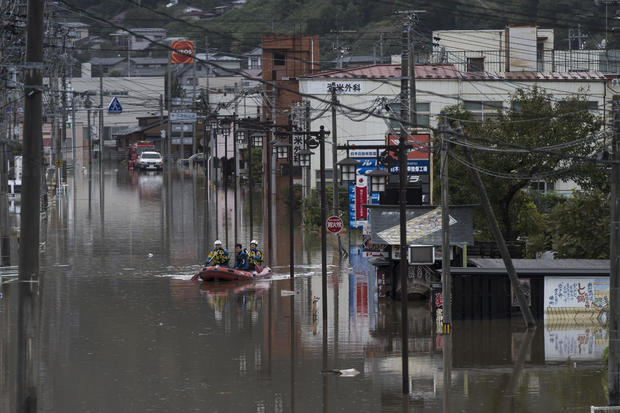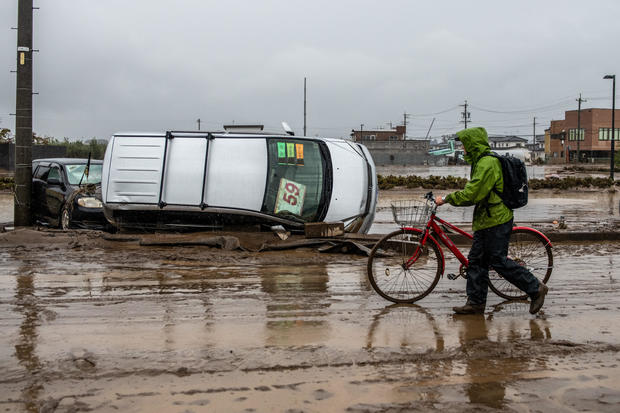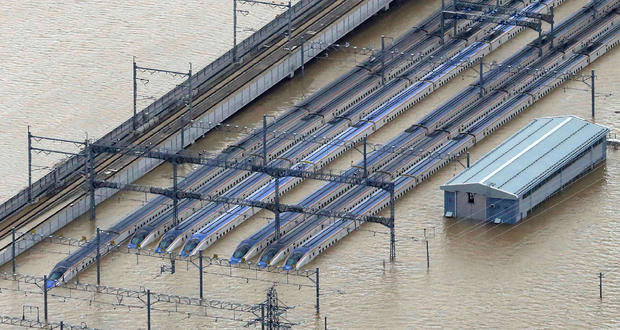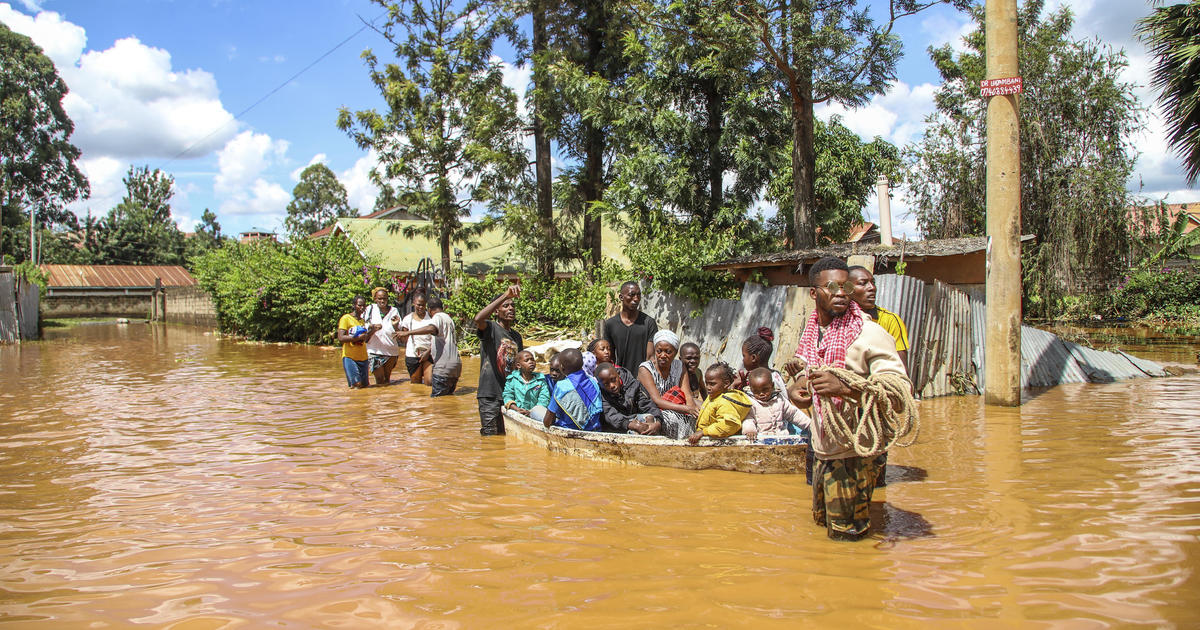Toll from typhoon in Japan, both human and material, keeps rising
Nagano, Japan — The toll of death and destruction from a typhoon that tore through central and northern Japan climbed Tuesday, as the government said it was considering approving a special budget for the disaster response and eventual reconstruction.
Prime Minister Shinzo Abe told a parliamentary session that the number of deaths tied to Typhoon Hagibis had climbed to 53 and was expected to rise, as at least another nine people are presumed dead. Abe pledged to do the utmost for the safety and rescue of those missing or those who had to evacuate. "We put the people's lives first," he said.
While central Tokyo was nearly back to normal and people were able to start cleaning up in places where floodwaters subsided, hard-hit areas like Nagano, Fukushima were still inundated. Abe said there are concerns of lasting effects in the storm-hit areas and pledged speedy support for residents.
CBS News correspondent Ramy Inocencio said parts of Nagano, a city that once hosted the Winter Olympics, were in ruin; the river that runs through the city breached its levee, destroying homes, flipping cars and toppling power lines.
Across Japan crews were working around the clock, and more than 110,000 people had joined in the search and recovery efforts using everything from helicopters to their bare hands to help free people trapped in mudslides.
"This makes me want to cry"
Retired carpenter Toshitaka Yoshimura, who grew up in the Tsuno district of Nagano, was stunned when he returned to his home after staying at an evacuation center during the storm. His house seemed like an unlivable, muddy mess. Doors were knocked out, his handmade furniture tossed around and damaged, and everything from a futon to electronics was covered with dirt and broken.
"I put a lot of effort in this house. I made all the furniture with my wife. Now look what happened in one day," he said, with his voice trembling with emotion. "Now this makes me want to cry."
At least some of his memorable photos with his family and relatives were intact, along with toys and games that his younger relatives played when they gathered at his house.
"I'm glad they survived at least," said his nephew Kazuki Yoshimura. "Perhaps we can still do something about the house, but nothing can be more precious than life."
Hagibis hit Japan's main island on Saturday with strong winds and historic rainfall that caused more than 200 rivers to overflow, leaving thousands of homes flooded, damaged or without power. Rescue crews on Tuesday were still searching for those missing, thought to number about 20.
Some 34,000 homes were without power and 110,000 lacked running water. More than 30,000 people were still at shelters as of late Monday, according to the Cabinet Office's latest tally.
Abe said the government is funding the disaster response from the 500-billion yen ($4.6 billion) special reserve from the fiscal 2019 budget and may additionally compile a supplementary budget if needed.
Hi-tech trains crippled
West Japan Railway Co. said its Hokuriku Shinkansen bullet train services connecting Tokyo and Kanazawa in the central north were reduced because of flooding of six trains at its railyard in Nagano. The trains sat in a pool of muddy water that was up to their windows.
Questions have been raised about the site of the railyard, which sits in an area noted on a prefectural hazard map as a flood area. Chief Cabinet Secretary Yoshihide Suga said the operator's preparedness should be investigated later but the priority is to get the trains out of the water. Some water has been pumped out, but more than half of the railyard was still underwater.
Nothing spoke more of the powerlessness of modernization against natural disasters than the rows of bullet trains deluged in Nagano, a mountainous region to the northwest of Tokyo. The scene highlighted how Japan's technological prowess and meticulous attention to detail may be no match for the rising risks in a precarious era of climate change.
"Weather conditions in Japan up to now have been relatively moderate," said Toshitaka Katada, a disaster expert and professor at the University of Tokyo.
Those days are over, and Japan's readiness for disasters, still based on data collected decades ago, hasn't kept up with the times, he said.
"Damage gets multiplied when people are overly confident about their safety," Katada said.
With increasingly extreme weather, he said the government, businesses and individuals need to rethink their preparedness.






